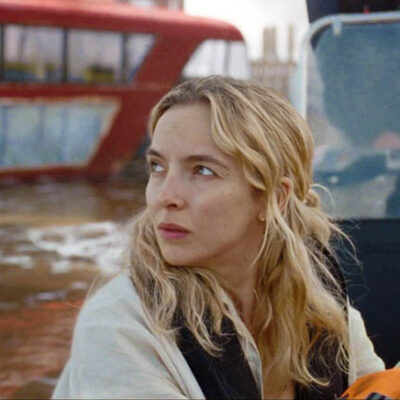STARTING THE PROCESS
Working in conjunction with Production Visual Effects Supervisor Dan Deleeuw and Weta Digital Visual Effects Supervisor Matt Aitken, Sidney’s process after receiving turnover from Marvel on end battle sequence shots began with piecing together the various plates, previs, postvis and notes received.
“We call this the ‘breaking down the plate’ stage,” explains Sidney. “We have the plates, but now we need to do the turnover notes for these plates for the animation team.”
The Animation Supervisor credits his Production Manager, Eleanor Morris, for helping him to identify and catalog all the different things that now needed to happen.
“We would look at the plates and say, ‘Well, we need this character to be matchmoved from frame one to frame 10. We need this character to be painted out from this frame to this frame. We need this guy to be removed or painted out. Or, OK, we’re going to put the CG character right here so that we don’t have to reconstruct the plate and so on and so forth.’ Eleanor would take notes of what I’m saying when I look at the plates as we come up with a plan to make the shots work.”
It’s at this point, too, that Sidney did draw-overs on the plates themselves. The idea here is to give a quick visual guide of what needed to be done to the plates, either in preparation or in terms of actual layout and animation. “Draw-overs help the matchmove, roto and paint teams identify what they need to concentrate their effort on,” he says.
The resulting notes could be a mix of simple items and much more complex descriptions. For example, recalls Sidney, the notes for the shot when Captain America says, ‘Avengers, assemble,’ took a lengthy 10 minutes to read from beginning to end.
PLUS’ING THE SHOTS
It’s also at the breaking-down-the-plate stage that Sidney identified where additional footage and, in this case, motion capture might be required. There were so many characters and fighting moments involved in that final battle, of course, that it was deemed some additional capture would help add to the scenes.
“I made a list of the elements that I thought we were going to need to shoot,” Sidney describes. “I sent that list to Marvel identifying the reasons we needed new capture or needed to re-shoot capture that they had already done. And they never pushed back on anything – it’s an extra expense for them, but they trusted us to know that we needed more.”
Sidney had, in particular, identified that further action was needed for the mid-ground areas of the battle. He put together some story points focusing on how certain heroes would take on certain villains and show the battle progressing, and made notes on that. This ultimately became the basis for a new shoot with motion-captured stunt performers on the shooting stages in Atlanta, which was attended by Aitken.
Adds Sidney: “The story we were trying to tell was that, at the beginning, the heroes are running after the villains – they are beating them. But the more the battle progresses, the more we see that all the villains are still outnumbering the heroes. For one kill from the heroes, you have two kills from the villains.”














